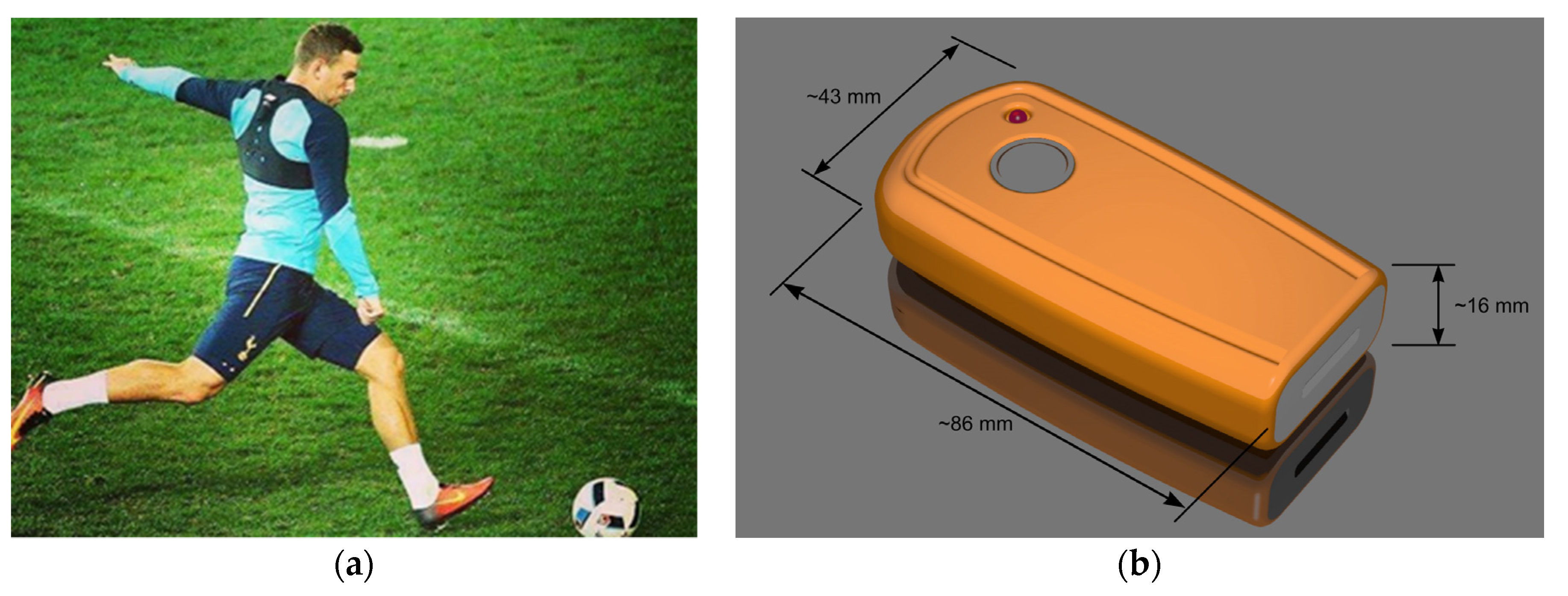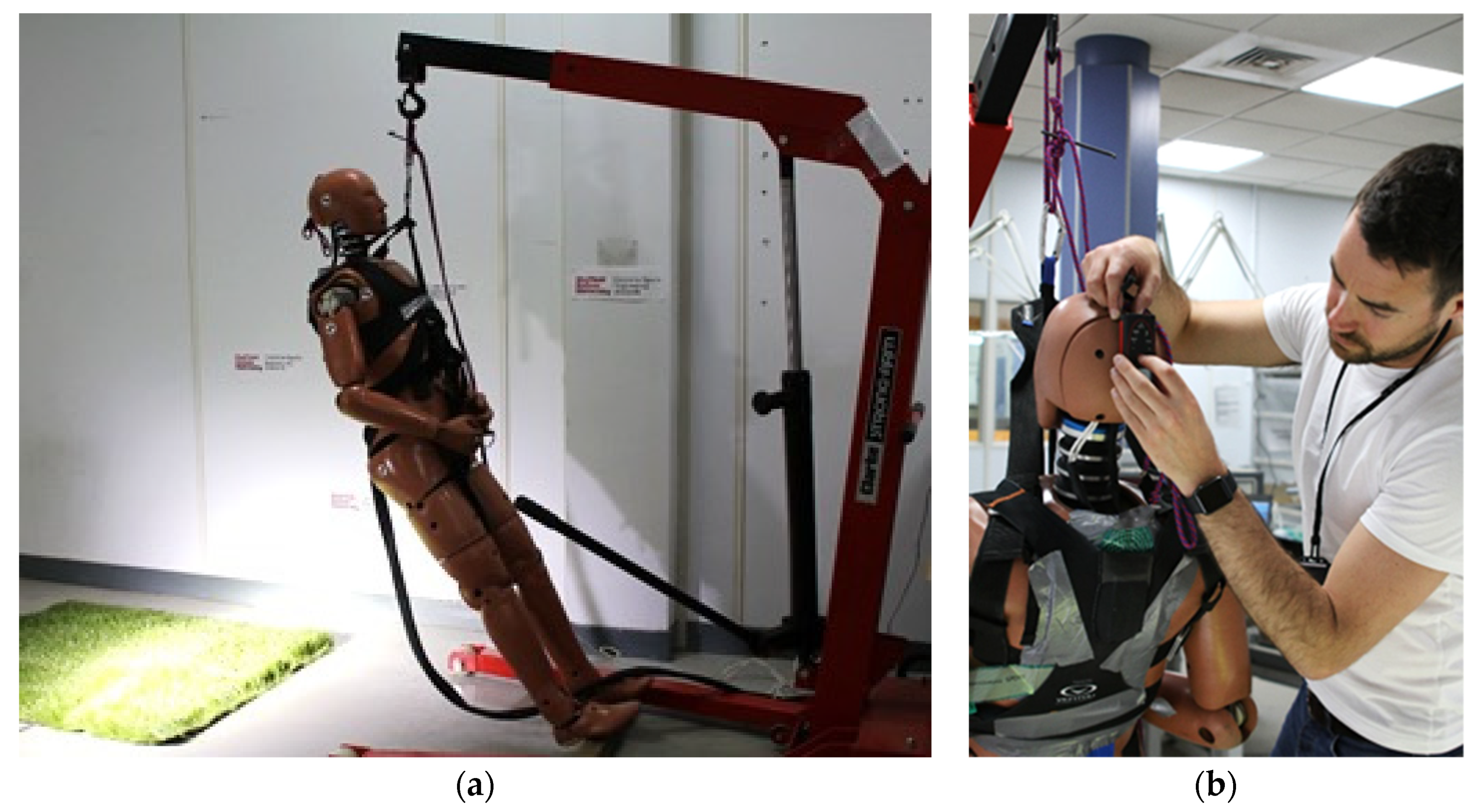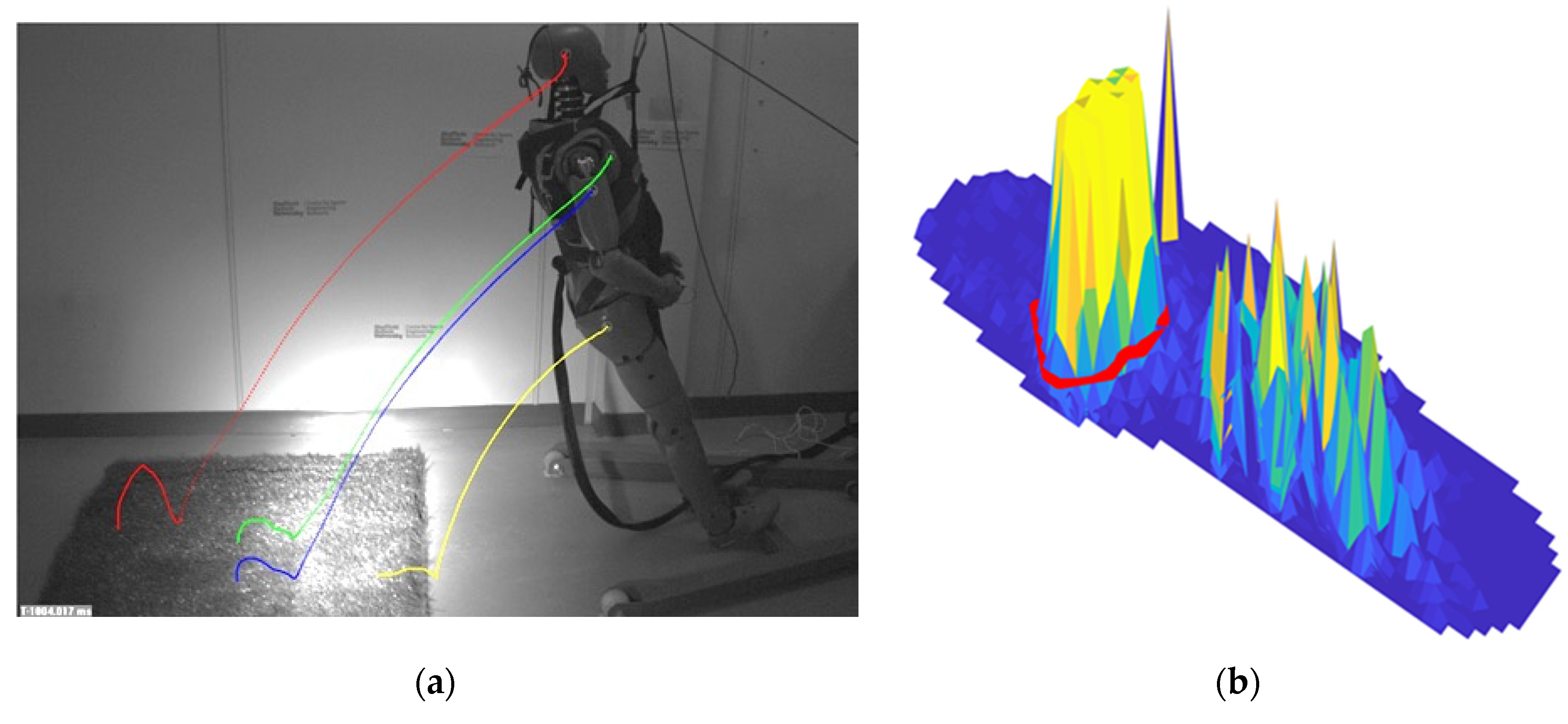Wearing Electronic Performance and Tracking System Devices in Association Football: Potential Injury Scenarios and Associated Impact Energies †
Abstract
:1. Introduction
2. Materials and Methods
2.1. Injury Scenarios
2.2. Associated Impact Energies
3. Results
4. Discussion
“I perceive a greater risk to goalkeepers wearing devices compared to outfield players. In the few instances that a player has complained about some kind of soft tissue injury related to wearing a GPS device, more often than not it will be the goalkeeper through his direct contact from landing on the backs during a dive or during a cross and like they get clattered by an attacker and end up awkwardly landing on the device that way.”
“…more of a contusion really, more of an impact from the device itself.”
5. Conclusions
Acknowledgments
Conflicts of Interest
References
- IFAB. Amendments to the Laws of the Game 2015/16. Available online: https://resources.fifa.com/mm/document/affederation/ifab/02/60/91/38/circular_log_amendments_2015_v1.0_en_neutral.pdf (accessed on 6 October 2017).
- Medina, D.; Pons, E.; Gomez, A.; Guitart, M.; Martin, A.; Vazquez-Guerreo, J.; Camenforte, I.; Carles, B.; Font, R. Are There Potential Safety Issues Concerning the Safe Usage of Electronic Personal Tracking Devices? The Experience of a Multi-sport Elite Club. Int. J. Sports Physiol. Perform. 2017, 4, 1–12. [Google Scholar]
- Henriques, J.; Caseiro, R.; Martins, P.; Batista, J. High-speed tracking with kernelized correlation filters. In Proceedings of the IEEE Transactions on Pattern Analysis and Machine Intelligence, Boston, MA, USA, 7–12 June 2015; pp. 583–596. [Google Scholar]
- Garcia, D. Robust smoothing of gridded data in one and higher dimensions with missing values. Comput. Stat. Data Anal. 2010, 54, 1167–1178. [Google Scholar] [CrossRef] [PubMed]
- Dunn, M.; Wheat, J.; Miller, S.; Haake, S.; Goodwill, S. Reconstructing 2D planar coordinates using linear and non-linear techniques. In Proceedings of the 30th International Conference of Biomechanics in Sports, Melbourne, Australia, 2–6 July 2012; pp. 380–383. [Google Scholar]
- Winter, D.A. Biomechanics and Motor Control of Human Movement, 3rd ed.; Wiley: Hoboken, NJ, USA, 2008. [Google Scholar]
- Mullineaux, D.; Bartlett, R.; Bennett, S. Research design in biomechanics and motor control. J. Sport Sci. 2001, 19, 739–760. [Google Scholar] [CrossRef] [PubMed]
- Schmitt, K.-U.; Schlitter, M.; Boesiger, P. Biomechanical loading of the hip during side jumps by soccer goalkeepers. J. Sports Sci. 2010, 28, 53–59. [Google Scholar] [CrossRef] [PubMed]



| Pre-Impact Velocity (m·s−1) | Impact Impulse (Ns) | Effective Mass (kg) | Energy (J) | |
|---|---|---|---|---|
| Mock-EPTS device (n = 9) | 5.8 ± 0.4 | 48.9 ± 13.9 | 8.4 ± 2.5 | 142.4 ± 42.1 |
| No device (n = 4) | 5.9 ± 0.3 | 2.0 ± 1.3 | 0.3 ± 0.2 | 5.8 ± 4.0 |
| ESB | −0.1 | 3.4 * | 3.3 * | 3.2 * |
Publisher’s Note: MDPI stays neutral with regard to jurisdictional claims in published maps and institutional affiliations. |
© 2018 by the authors. Licensee MDPI, Basel, Switzerland. This article is an open access article distributed under the terms and conditions of the Creative Commons Attribution (CC BY) license (https://creativecommons.org/licenses/by/4.0/).
Share and Cite
Dunn, M.; Hart, J.; James, D. Wearing Electronic Performance and Tracking System Devices in Association Football: Potential Injury Scenarios and Associated Impact Energies. Proceedings 2018, 2, 232. https://doi.org/10.3390/proceedings2060232
Dunn M, Hart J, James D. Wearing Electronic Performance and Tracking System Devices in Association Football: Potential Injury Scenarios and Associated Impact Energies. Proceedings. 2018; 2(6):232. https://doi.org/10.3390/proceedings2060232
Chicago/Turabian StyleDunn, Marcus, John Hart, and David James. 2018. "Wearing Electronic Performance and Tracking System Devices in Association Football: Potential Injury Scenarios and Associated Impact Energies" Proceedings 2, no. 6: 232. https://doi.org/10.3390/proceedings2060232
APA StyleDunn, M., Hart, J., & James, D. (2018). Wearing Electronic Performance and Tracking System Devices in Association Football: Potential Injury Scenarios and Associated Impact Energies. Proceedings, 2(6), 232. https://doi.org/10.3390/proceedings2060232





